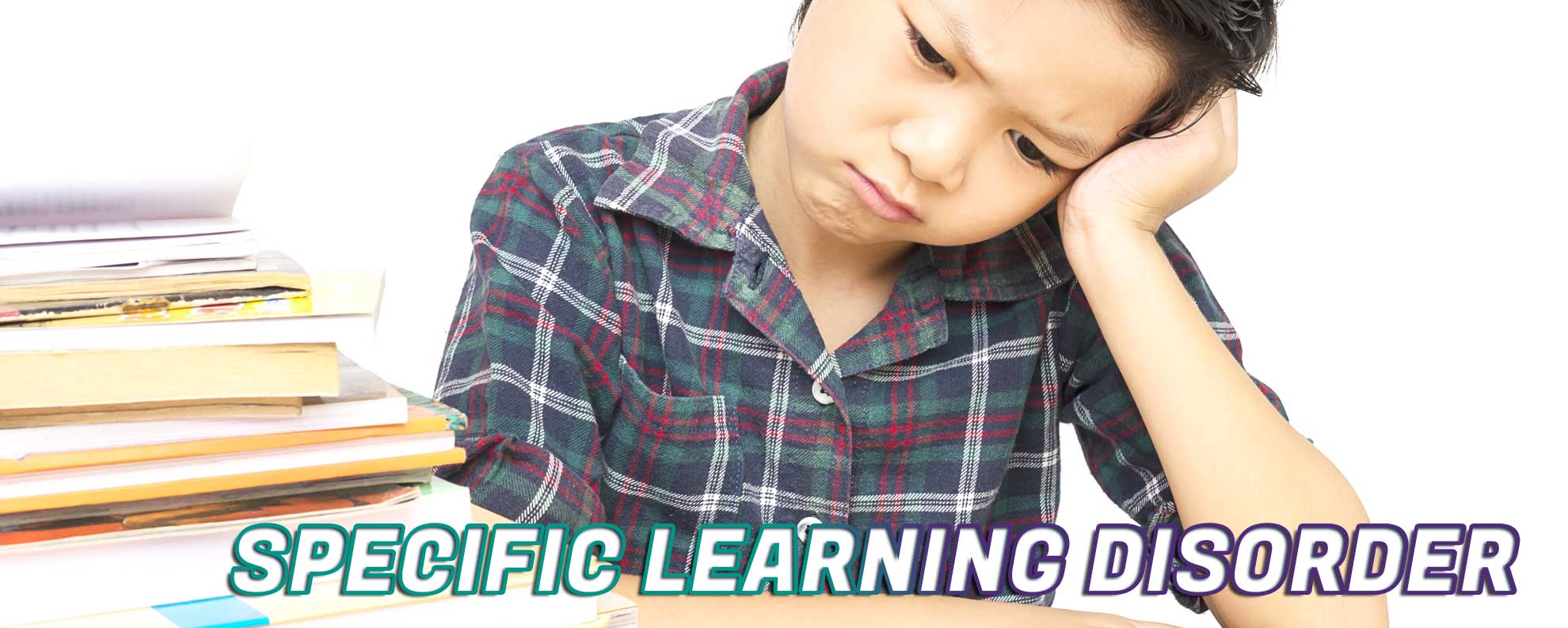
Specific learning disorder (SLD) is a neurological condition which affects the brain’s ability to send, receive, and process information. A child with a learning disorder may have difficulties in reading, writing, speaking, listening, understanding mathematical concepts, and with general comprehension. Each type of disorder may coexist with another.
Learning disorder are not caused due to physical or mental illness, economic condition, or cultural background; neither do they indicate that the child is weak or lazy.
Children with learning disorder experience almost everyday situations such as shame, anxiety, frustration, social isolation, melancholy and lack of self-confidence. Such situations have serious psychological effects on a child and contribute to creating a negative self-image and low self-esteem.
Types of Specific Learning Disorders are as follows:
- Dyslexia, the term dyslexia comes from the greek word, DYS means dysfunction and LEXIA means difficulty with language and words. Dyslexia is also a specific learning difficulty that can affect a child’s ability to negotiate language. It can impact on both written and spoken language – a child with dyslexia may be a late talker and can have early problems with language recall. However, dyslexia is not related to intelligence and it’s not uncommon to find a bright and highly motivated child whose reading and writing level is far below that of his or her peers.
Kids with dyslexia may need additional time to understand prompts and/or produce a response during assessments. In some cases, a child’s written work may be simplified out of fear of making spelling mistakes. Working vocabulary can also be more limited if reading skills are impaired. - Dyscalculia is a difficulty in learning or comprehending arithmetic, such as difficulty in understanding numbers, learning how to manipulate numbers, performing mathematical calculations and learning calculation concepts or facts in mathematics.
In young children, dyscalculia may affect learning to count and recognize numbers. It can range from an inability to order/sequence numbers correctly and extend to limited strategies for problem solving. Children with dyscalculia may have trouble performing basic math calculations, understanding calculation concepts, or they may have difficulty with concepts like time, measurement or estimation. As a child gets older, they may have trouble solving basic math problems or memorizing things like multiplication tables. - Expressive and Written Dysphasia is when a child or individual has trouble expressing themselves in verbal or written words. A child struggles with choices of words, sequencing of words, basic sentence structure and grammatical awareness.
A child with dysphasia have trouble with verbal/written expression and difficulty in organizing their thoughts coherently. Having trouble finding the right word he or she wants to use or may accidentally use the opposite word of the one he or she is looking for, or may not make sense at all, but not realize it. Having clear thoughts but can’t express in writing. It is having problem to construct proper sentences in an organized way. - Dyspraxia is difficulty with confusion in recognizing and writing between letters having similar shape and writing alphabet and numbers in mirror-image.
It is a brain-based motor skills weakness/disorder, motor skills help us with movement and coordination. It affects fine and gross motor skills, motor planning, and coordination. They also have trouble with balance and coordination, a young child with dyspraxia may bump into things or have trouble holding a spoon or tying their shoelaces. Other problems associated with dyspraxia include:
• Speech difficulties
• Sensitivity to light, touch, taste, or smell
• Difficulty with eye movements
Symptoms of dyspraxia can also lead to low self-esteem. - Dysgraphia as she has a deficiency in the ability to write, primarily handwriting, but also coherence. She is also showing problems with copying from the book or board, as she tends to skips and often wrongly copies letters or words. She is unable to hold a pencil correctly, and her posture is tense while trying to write. This leads her to tire easily, causing discouragement that further inhibits writing and copying progress.
Dysgraphia is a transcription difficulty, meaning that it is a writing disorder associated with impaired handwriting, orthographic coding, and finger sequencing (the movement of muscles required to write). Its involves the difficulty in encoding of auditory and visual information into symbols for letters and written words, have unusual difficulty with handwriting and spelling, which in turn can cause writing fatigue.
Issues with incorrect or weak pencil grip as the ability to hold a pencil correctly can affect a child’s attitude to learning and school work, their academic achievement as well as their motor/joint development. A good pencil grip facilitates legibility, letter formation, speed and endurance. - Focusing in Learning is when a child is lacking in focus and easily distracted. Low concentration level pertaining to learning. A child who have focusing issues have difficulty paying attention and staying on task when completing a given task. They are easily distracted and often have difficulty in traditional school settings.
- Short Term Memory in Learning is when a child easily forget what is taught by teachers, what they learn in school or at home and easily forget what he or she reads or what was read to them. Memory is essential to learning because the information stored in a child’s memory creates the basis for linking new knowledge by association.
- Visual in Perception is a visual processing, or perceptual, disorder refers to a hindered ability to make sense of information taken in through the eyes. This disorder is different from problems involving sight or sharpness of vision. Difficulties with visual processing affect how visual information is interpreted, or processed by the brain.
- Auditory is an auditory disorder, which a child experiences difficulties processing auditory information include difficulty comprehending more than one task at a time and a relatively stronger ability to learn visually.
